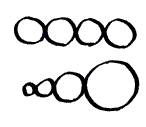
A). Unify the objects of similar kind or intended for contiguous operations;
B). Unify in time operations, actions which are similar or contiguous;
C). Unify the objects or methods of similar purpose but opposite nature, or opposite purpose but similar nature (unification of two opposites);
D). Unify in time operations of actions which are opposite.

The opposite:
A). Separate the objects of the same class or performing similar operations. Make them be or act somewhat differently;
B). Separate in time operations, actions of the same class or those which are contiguous. Make them somewhat different;
C). Separate the objects of the same class or performing opposite operations. Make them be or act totally differently, but keep together in some way;
D). Separate in time operations, actions of the same class or those which are contiguous. Make them opposite.
Example:
Andrei Alexandrescu, "Modern C++ Design", Addison-Wesley, 2001.
["Multiple inheritance" and "templates" are certain mechanisms of computer software development]
" Now compare the list of drawbacks of multiple inheritance with the list of drawbacks of templates. Interestingly, multiple inheritance and templates foster complementary trade-offs. Multiple inheritance has scarce mechanics; templates have rich mechanics. Multiple inheritance loses type information, which abounds in templates. Specialization of templates does not scale, but multiple inheritance scales quite nicely. You can provide only one default for a template member function, but you can write an unbounded member of base classes.
This analysis suggests that a combination of templates and multiple inheritance could engender a very flexible device, appropriate for creating libraries of design elements."
This is the Method 5 [5] | Index